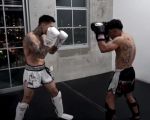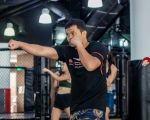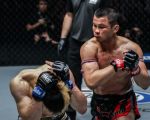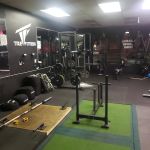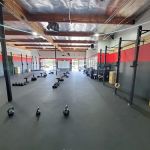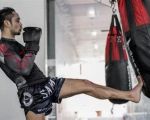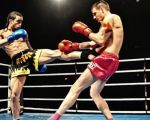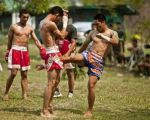Muay Thai Conditioning for Fighting Fitness: Enhance Your Performance with These Techniques
- 1. Understanding the Importance of Muay Thai Conditioning
- 2. Essential Fitness Areas for Muay Thai Fighters
- 3. Key Muay Thai Conditioning Techniques
- 4. How to Incorporate Muay Thai Conditioning into Your Training
- 5. Common Mistakes to Avoid in Muay Thai Conditioning
1. Understanding the Importance of Muay Thai Conditioning
Muay Thai conditioning is essential for anyone serious about competing or training in this brutal sport. Unlike other forms of fitness training, Muay Thai requires a unique combination of strength, stamina, agility, and mental focus. Proper conditioning enhances all these aspects, making fighters more efficient in both offense and defense.
In Muay Thai, fighters are expected to be explosive, quick, and resilient. A fighter who lacks sufficient conditioning will struggle to last through intense rounds, recover from powerful blows, or deliver quick, effective strikes. Conditioning is the key to a fighter’s endurance and ability to perform at their peak for the entire duration of a fight.
2. Essential Fitness Areas for Muay Thai Fighters
To be fully prepared for Muay Thai, it’s important to focus on the following fitness areas:
- Cardiovascular Endurance: Fighters need excellent cardiovascular fitness to maintain high energy levels throughout the fight. Running, cycling, and skipping rope are great exercises to build stamina.
- Strength and Power: Muay Thai demands both explosive power for strikes and endurance for holding your guard or controlling your opponent. Weight training, bodyweight exercises, and plyometrics help build this strength.
- Flexibility and Mobility: Flexibility allows for more effective kicks and movement, which are crucial in Muay Thai. Stretching, yoga, and dynamic warm-ups are essential for increasing range of motion.
- Core Stability: A strong core supports every movement in Muay Thai, from punches to kicks and clinch work. Planks, Russian twists, and medicine ball exercises can strengthen the core.
3. Key Muay Thai Conditioning Techniques
Effective Muay Thai conditioning focuses on specific training techniques designed to improve strength, speed, and endurance. Here are some key exercises to incorporate into your routine:
- Pad Work: Training with pads or mitts allows fighters to practice technique, while also building strength and endurance through fast-paced drills.
- Heavy Bag Work: Using the heavy bag to practice kicks, punches, and elbows builds power, endurance, and conditioning. This is a core part of Muay Thai training.
- Clinch Work: Working the clinch develops strength in the upper body, as well as endurance, balance, and control. It’s vital for close-range fighting.
- Interval Training: High-intensity interval training (HIIT) is a great way to mimic the burst-style energy needed in Muay Thai. HIIT improves cardiovascular endurance and helps with recovery time during rounds.
- Burpees and Jumping Jacks: These bodyweight exercises are excellent for building explosive strength and improving cardiovascular capacity, both of which are crucial for Muay Thai fighters.
4. How to Incorporate Muay Thai Conditioning into Your Training
Incorporating Muay Thai conditioning into your training routine is essential to developing a well-rounded fighter. Here’s how to do it effectively:
- Daily Routines: Set aside time each day for conditioning, including cardio, strength, and flexibility. Split your training to focus on different areas depending on your goals.
- Incorporate Conditioning into Sparring: During sparring, make sure you’re not just focused on technique, but also on maintaining your fitness levels. Push yourself to keep up a fast pace to simulate a real fight.
- Rest and Recovery: Conditioning is intense, so allow time for rest and recovery. Overtraining can lead to burnout or injury, so be mindful of balancing hard sessions with adequate rest.
5. Common Mistakes to Avoid in Muay Thai Conditioning
While conditioning for Muay Thai is critical, some common mistakes can hinder progress. Here’s what to avoid:
- Neglecting Flexibility: Flexibility is just as important as strength and cardio. Not focusing on stretching can limit your range of motion and increase the risk of injury.
- Overdoing Cardio: Excessive running or cardio can lead to muscle loss and decreased strength. Balance your cardio with strength training to build a well-rounded physique.
- Skipping Core Training: Your core is the powerhouse of every Muay Thai movement. Skipping core exercises can lead to weak strikes and poor stability during the fight.
By avoiding these common mistakes and sticking to a balanced conditioning routine, you'll be able to enhance your fitness level and perform better in the ring.
If you're looking for the best gear to complement your Muay Thai training and improve your fitness, visit Humble Challenger for the top training equipment and accessories. Investing in the right gear can help boost your performance and ensure you get the most out of your conditioning efforts.














